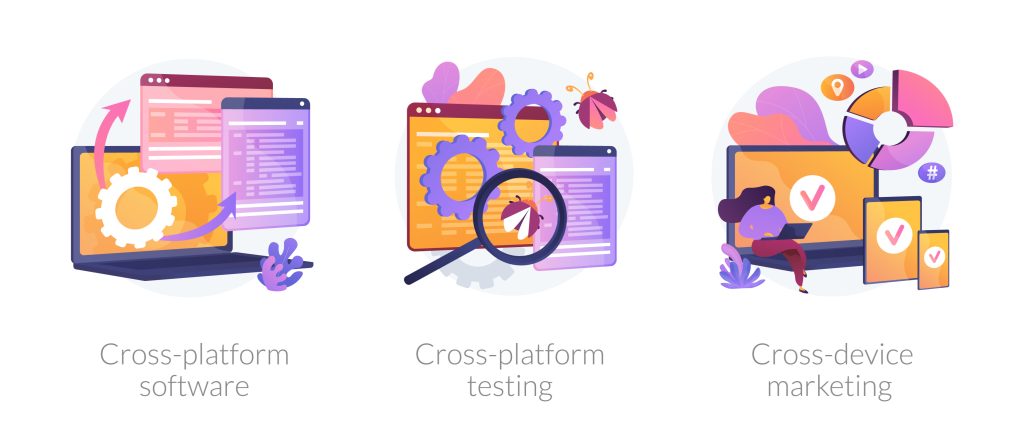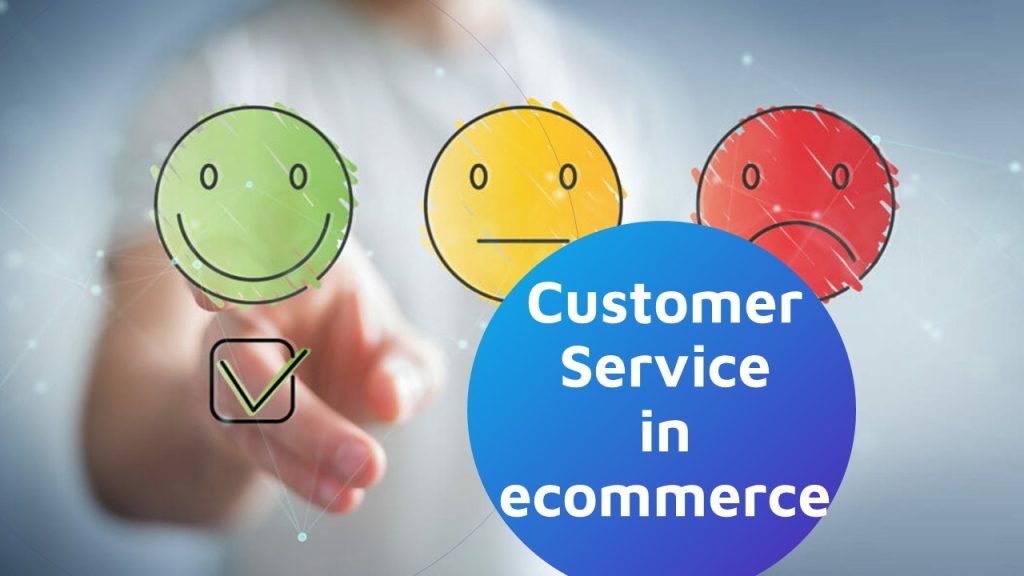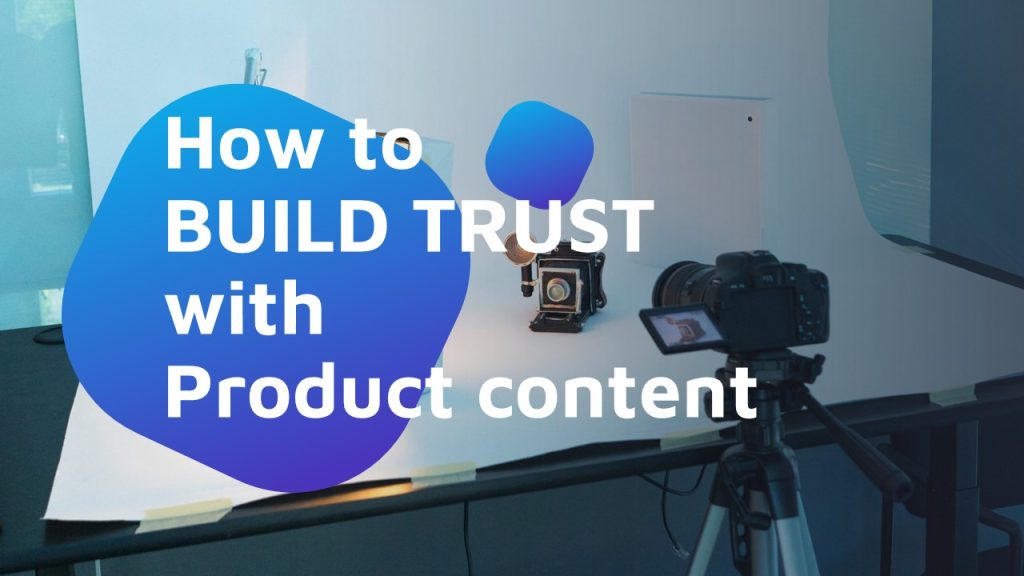Metrics in E-commerce are the rawest reflection you can get about your business’ profitability.
Whether you’re just getting started in E-commerce or you’ve been selling products online for a while, one thing is clear: you need to know how your business is doing, and you need relevant indicators to measure your business’ performance. Indicators you need to check regularly to improve your results.
Content2Sell focuses on product content that is used in different E-commerce platforms. And this post is not about product content. Instead, we will go over the most relevant metrics in E-commerce, and how your content can improve them.
This is not unrelated because, ultimately, your sales depend on your views, and your views depend on your content.
That said, let’s move on.
The important metrics in E-commerce
Traffic by device
Your customers want to have a great experience in your online store, and you need to know how you can give it to them. Therefore, it’s important to know the devices they visit you from.
Today, most sites are optimized for mobile devices, including tablets. But a common mistake is not adapting the images to them or using image text not matching the necessary proportions. That makes viewers zoom in and lose image quality, or even worse, using desktop mode.
- Analyze your traffic by device and optimize your e-shop to the most used ones.
- Make sure the loading times are fast, so your viewers’ experience is as swift as they like.

Bounce rate
The bounce rate refers to the visitors who leave your website after viewing just one page. Usually, a high bounce rate indicates either that your content is not interesting to them or a user experience problem, such as excessive loading time or an unfriendly design.
Additional research should be made in that case, in order to find more data to reveal the source and take immediate action. Basic troubleshooting questions can give you a few hints to identify the root problem. For example, what page do users bounce from? Is it the only one? What makes it different than the others?
- See what your competitors do.
- Review your copy and your consistency.
- Think of a different page layout to make your products more appealing.
- Consider new product photography, adding video or 3D frames to give your visitors a better browsing experience.
Net Subscriber Rate
[ Subscribers – unsubscribes ]
Email marketing is one of the most powerful ways to nurture the relationship with your customers. It has a very high ROI, it allows to promote products skipping third-party platforms such as Google or Facebook and gives a close and personal contact.
This is important now, as third-party cookies are living on precious borrowed time.
To do effective email marketing, the first step is to get users to subscribe to your mailing list. And regular users do not leave their email for free. They expect to get something in return, which could be a discount or information that is relevant to them.
That’s why among the most important metrics in E-commerce is the Net Subscriber Rate.
A low NSR could be the result of low promotion, poor user experience or simple indifference. In which case your organic traffic and your bounce rate will have already told you.
- Review your copy and your microcopy to make the process as clear as possible.
- Design a content strategy to provide your audience with added value. For example, loyalty discounts or cross-sales with external collaborators.
- Optimize your ads and your imagery. And of course, clear CTA’s.
Email click rate
The email click rate shows the effectiveness of email marketing campaigns. It’s the percentage of users who click on any of the links included in your email and end up visiting your online store.
According to Campaign Monitor, the average click-to-open rate is somewhere between 5% and 16%, depending on the industry – stats worth checking out!
If this metric is too low, you should review the content and usability of your emails. Remember time is precious and few people spend it reading promotional emails.
- Keep your text brief and dress it up with interesting offers and eye-catching content.
- Make your recipients feel like they are special. They actually are!
Return on Ad Spend (ROAS)
The Return on Advertising Investment (ROAS) helps to measure the effectiveness of advertising campaigns and shows precisely what media and which channels work and which don’t. This way, you can allocate your advertising budget accordingly to maximize results.
Advertising should increase your leads and business opportunities. If it’s not, you’re wasting your money and might need to redefine your buyer personae or your entire strategy.
- Consider outsourcing your content creation. It does take time, and there are plenty of specialists out there.
- Review your ads’ copy to better explain the added value your brand provides,
- Explore new promotion channels to reach your audience where it actually is.
Conversion Rate
[ Number of buyers / Number of visitors ]
The conversion rate to sale is the percentage of visitors who go all the way through your sales funnel and make a purchase in your online store. It’s considered to be one of the most important metrics in E-commerce, and most analytics tools include it in their reports.
According to Marketing Sherpa, most E-commerce sites have a conversion rate between 1% and 5%.
Still, this is a relative metric. Not all businesses base it on sales, and many use it to measure their performance regarding other objectives: subscriptions, downloads, contributions, free trials…
When it comes to products, information and design are equally important.
- Give a clear and relatable explanation about what your product does
- Include High-quality photography and explainer videos
- Provide context, focusing on your audience’s pain points and your product’s solution.
When you have enough organic traffic, brand consistency, UX design, a solid copy and clear CTA’s are what make a difference.
Average order value
This metric is the average amount a customer spends on every purchase.
Naturally, you want this to be as high as possible. To improve it, try incentivizing the purchase of additional products through cross-selling strategies, product recommendations, or explore collaborating with brands related to your sector.
Average Lifetime Value
[ Number of purchases x Average amount spent x Time ]
The average lifetime value is what a user spends on a brand during the entire time he is its customer. For example, a user who makes two purchases on average per year for 5 years and the average value of each purchase is USD 30, will have a lifetime value of USD 300.
This can be improved through loyalty and referral strategies that encourage users to repeat purchases or to recommend your product / brand for rewards, discounts, or other perks.
Acquisition Cost
[ Marketing costs / Number of new clients ]
Knowing how much it costs to acquire a new customer gives a highly realistic glimpse of your overall profitability. E-commerce is not just about the product you sell, but the total cost of each sale.
To get this, divide the total marketing spend by the number of new customers in a given period. It should be checked regularly, because unless you are constantly creating new ads, a rising Acquisition Cost calls for a change in your strategy.
This becomes more interesting when used in all marketing channels, as it allows to compare, discard or replicate advertising strategies.
Ideally, your Customer Acquisition Cost should be less than the average order amount. Sometimes, it is worth making your first purchase “at a loss” – if it helps building customer loyalty, and if it raises the average lifetime value of the customer.
- Use Social Media platforms and start creating a Social Commerce strategy.
- Make captivating video ads that can be shared among users with similar interests.
Revenue per traffic source
Not all traffic to your e-shop has the same profitability. Some channels bring visitors to your site who are more likely to become customers, but not all of them will. Revenue per traffic source is one of the most important metrics in E-commerce as it allows to manage your marketing budget properly.
Opening to new sales channels can take time and effort. Therefore, always keep an eye on each traffic source, compare them and adjust accordingly.
- See what works in your best performing traffic source and try to replicate it in other channels.
- Do not forget different people hang out in different platforms.
Profit margin
[ Amount of purchase – ( Cost of products + Shipping cost) ]
Earlier we mentioned the Acquisition Cost and the Average Order Value. But if you want your online business to be really profitable, you should sharpen your focus and calculate the real profit margin. To do this, you will have to subtract the cost of products and shipping costs from the total amount of the purchase.
Needless to say, this should always be a positive number.
- See your competitors’ price including shipping across different channels.
- Compare your product content with theirs and consider replacing it with different and more appealing imagery to stand out from them.
Products and categories with the best results
Filtering your metrics in E-commerce will help you to better understand your e-shop’s performance and detect improvements points. In particular, take a look at:
- The products with a good Sale Conversion Rate that are not on your first page.
- Trending products.
- Products your customers are no longer interested in.
- What products are frequently ordered together.
- Which products have the highest return rate.
- Re-launch products which continue to get attention with fresh new content
- Sell out the ones which don’t. You may also try bundling and cross-selling.
But in any case, you will need a powerful headline and compelling content to catch their attention.
Product content has a direct impact on sales: the more people see your product, the more likely it is for them to buy it.
Cart Abandon rate
On average, 2 out of 3 consumers leave their cart abandoned. Therefore, this is one of the main reasons why brands stop making money. This is an urgent matter that should be promptly taken care of.
The most frequent causes of cart abandonment are unexpected costs and uncompetitive prices. However, other common causes are an unclear checkout and / or registration process, slow shipping times and lack of payment options.
- Review your checkout process and make sure it’s quick and seamless, with no more than 4 steps.
Customer retention rate
Acquiring new customers is more expensive than keeping them, although the latter shouldn’t be neglected (more on this below). The importance of customer loyalty is rapidly increasing with the progressive disappearance of Third-party cookies and the prominence that subscriptions are gaining.
- work on customer experience, product satisfaction and long-term loyalty strategies
- Stimulate subscriptions to your brand with discounts on future purchases or referral programs.

Churn rate
The churn rate measures customers lost over a given period of time.
There is no optimal percentage here, as it depends mainly on the industry. This is why you should never take your customer’s loyalty for granted or expect them to automatically become proactive brand promoters. Again, loyal customers like to be pampered in one way or the other.
Peaks and troughs should be closely analyzed and rapidly understood. In some industries, it’s easier to acquire new customers or to retain them in the long term. In any case, it is important to keep track of this E-commerce metric and work on the customer experience so that it is always under control.
Ideally, the churn rate should be as low as possible. Peaks mostly indicate a loss of interest and engagement, and today’s consumers are looking for brands that resonate with their ideals: sustainability, diversity, equality, and inclusivity.
Return and refund rate
Frequent returns and refunds can become a critical problem in E-commerce.
Flexible refund and return policies are a strong incentive for consumers to buy, but it’s important to make sure it doesn’t affect your e-shop’s profitability.
A high return rate is mostly related to expectations or low quality. In any case, keep an eye on this metric, compare it with other and take immediate action.
- Listen to your buyers and address their concerns. Communities appreciate transparency.
- Take new pictures showing your product in detail.
Clear explanations are real expectations
Assistance rate
The assistance rate is the percentage of users who contact customer service. A high rate probably indicates that the information is not clear enough regarding shipping policies, returns, payment, and others.
Consider including an FAQ section in your e-shop, after making research and empathy work. Cross-checking your insights with other metrics will most likely provide conclusive information.
The Average Resolution Time is very important for Customer Experience.
Would you buy from a brand that doesn’t respond to customers’ issues and complaints?
Net Promoter Score
The Net Promoter Score is a standard measure of customer satisfaction and tells how likely it is for a user will recommend us to friends and family. A negative Net Promoter Score should lead to improving User Experience, reviewing product presentation or maybe exploring operational changes – after, of course, getting as much first-hand feedback as possible.
Loyalty programs are an increasingly popular strategy to incentivize repeating customers, increase Average Spending per purchase and encourage promotion and referral. Having a loyalty program that is not delivering the expected results, calls for reviewing if the incentives are interesting enough for your audience and if users find it easy to join.
Give your business a boost
As we said earlier, metrics in E-commerce are the reflection of how people interact with a brand and a product. They should never be looked at separately. Crossing metrics can be revealing and point directly at the cause of a business’ low performance.
They are frequently related to content. Should you think your e-shop content could do much better, we would be glad to help.
Just schedule a call, and a get A FREE CONTENT Audit made by e-commerce specialists.



